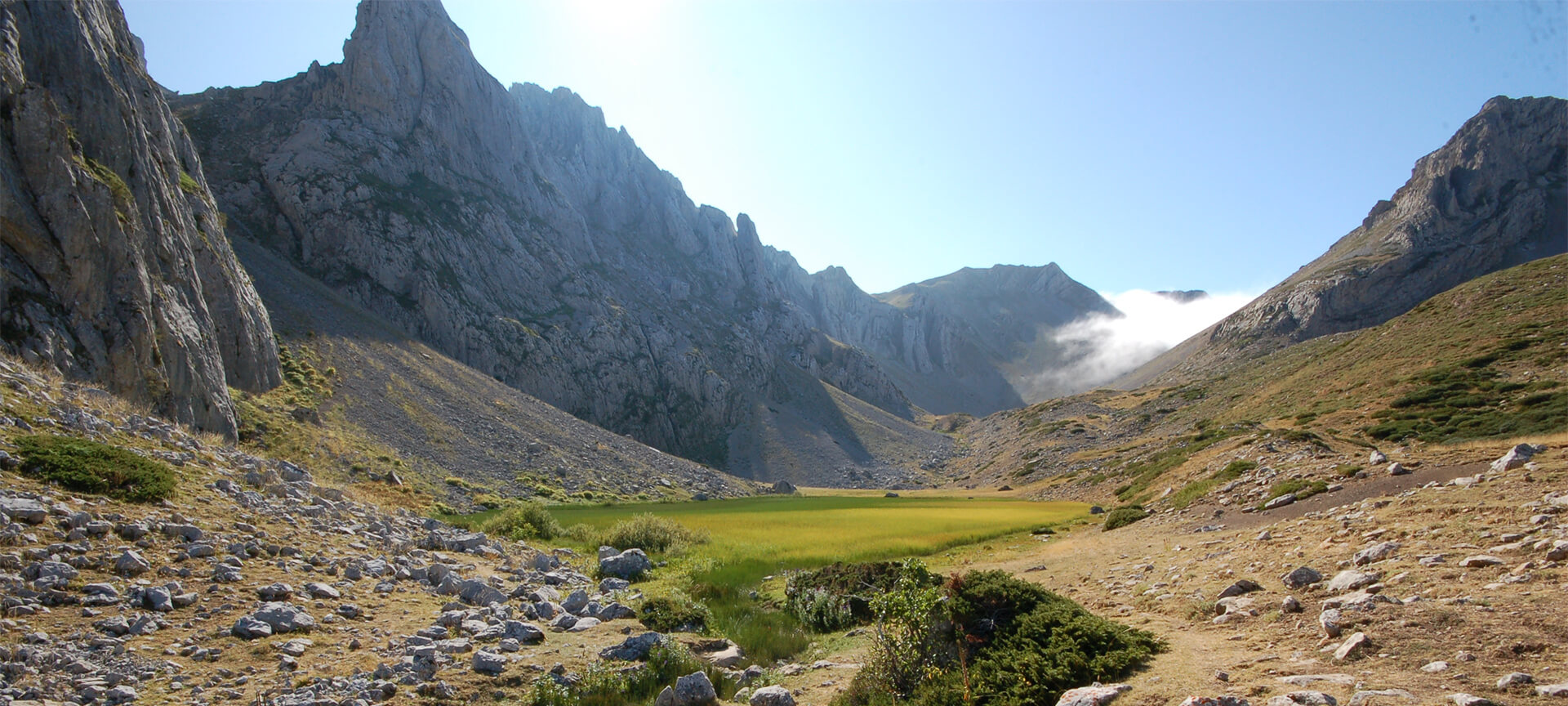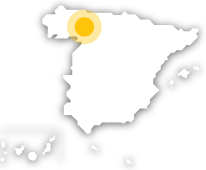
Babia Biosphere Reserve

The place where the kings used to relax
This area, declared a Biosphere Reserve by UNESCO in 2004, boasts a diverse flora and abundant fauna.
The Babia region is located in Castile and León, northwest of the province of León and includes the municipalities of Cabrillanes and San Emiliano. The mountains that separate Asturias and León in the Cantabrian Mountains form its northern border, with peaks exceeding 2,000 meters, including Peña Ubiña, one of the favourite peaks for mountaineers in the area at 2,417 metres. To the south, it borders another mountain range where the 2,154-metre peak of La Cañada stands out. Babia is characterised by a unique landscape of high mountains and rocky slopes, spectacular chasms and gorges. In its central part, at over 1,000 metres above sea level, there are vast valleys and meadows, through which the Sil River flows, and glacial lakes such as the Las Verdes Lagoon can be found.Its natural wealth is also significant: The area boasts a diverse range of plants, including endemic species like Saxifraga babiana and Salix cantabrica, as well as a rich variety of wildlife, with notable species such as the endangered brown bear, grey partridge and the piornal hare – a variety unique to the Cantabrian Mountains. Due to the fertile pastures, livestock farming has been the main activity in the area: You can still see the paths used for centuries by transhumant shepherds who, in summer, came from Extremadura with their sheep.The region also has a linguistic curiosity: The expression “to be in Babia”, which means “to be distracted”. The origins date back to the ancient kings of León and Asturias, who liked to spend long periods in Babia, devoting themselves to enjoying the tranquility and beauty of the surroundings, without worrying about court affairs.
Babia Biosphere Reserve
León (Castilla y Leon)
León (Castilla y Leon):
- Cabrillanes
- San Emiliano
Activa JS
What you need to know
-
Cultural information
There are numerous villages and towns that preserve the traditional flavour in their popular architecture. You can also find interesting examples of palaces and manor houses that once belonged to the Leonese nobility, such as the Quiñones Palace in Riolago, dating from the 16th century or the mansions of Villasecino and Lago de Babia.
-
Environmental information
This area is a transition zone between the Atlantic and Mediterranean ecosystems, so it's possible to find vegetation native to both environments, such as oaks, birches, beeches and junipers, as well as numerous endemic species. The fauna is also very diverse, with unique animals such as the brown bear, the capercaillie and the wolf; birds of prey such as the golden eagle, the Egyptian vulture and the griffon vulture; game species such as roe deer, wild boar and chamois; and a wide variety of fish in its rivers.
-
Information for visits
From the city of León, you can get there via the A-66 motorway and, at the Barrios de Luna reservoir, you can access the CL-626 road and the local roads LE-481, LE-482 and LE-483 that run through the area. Some of the activities available include hiking, cycling, climbing, mountaineering and sport fishing.


